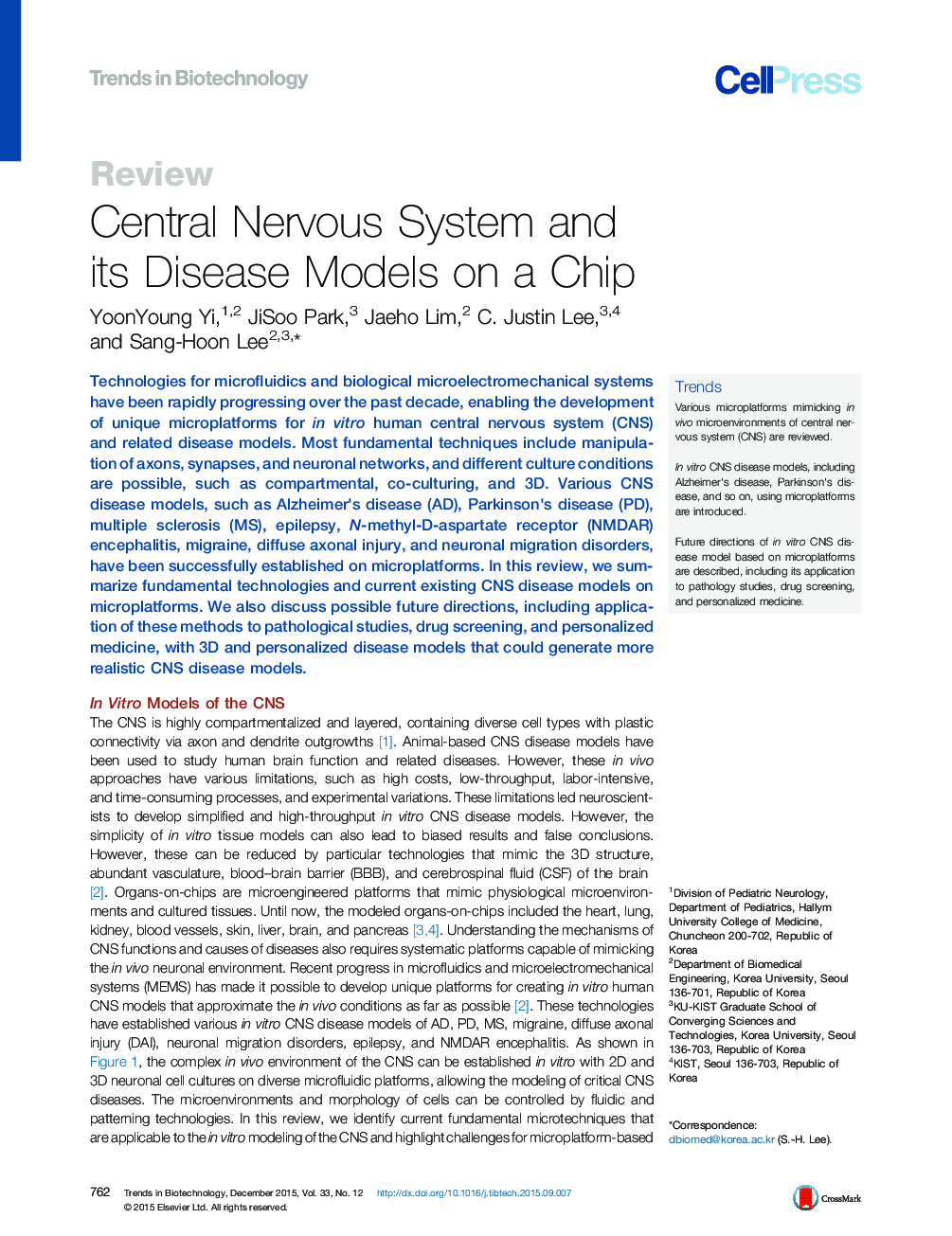| Article ID | Journal | Published Year | Pages | File Type |
|---|---|---|---|---|
| 36845 | Trends in Biotechnology | 2015 | 15 Pages |
Technologies for microfluidics and biological microelectromechanical systems have been rapidly progressing over the past decade, enabling the development of unique microplatforms for in vitro human central nervous system (CNS) and related disease models. Most fundamental techniques include manipulation of axons, synapses, and neuronal networks, and different culture conditions are possible, such as compartmental, co-culturing, and 3D. Various CNS disease models, such as Alzheimer's disease (AD), Parkinson's disease (PD), multiple sclerosis (MS), epilepsy, N-methyl-D-aspartate receptor (NMDAR) encephalitis, migraine, diffuse axonal injury, and neuronal migration disorders, have been successfully established on microplatforms. In this review, we summarize fundamental technologies and current existing CNS disease models on microplatforms. We also discuss possible future directions, including application of these methods to pathological studies, drug screening, and personalized medicine, with 3D and personalized disease models that could generate more realistic CNS disease models.
TrendsVarious microplatforms mimicking in vivo microenvironments of central nervous system (CNS) are reviewed.In vitro CNS disease models, including Alzheimer's disease, Parkinson's disease, and so on, using microplatforms are introduced.Future directions of in vitro CNS disease model based on microplatforms are described, including its application to pathology studies, drug screening, and personalized medicine.
